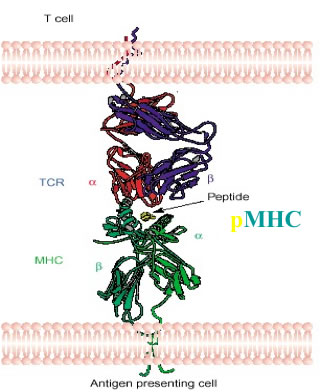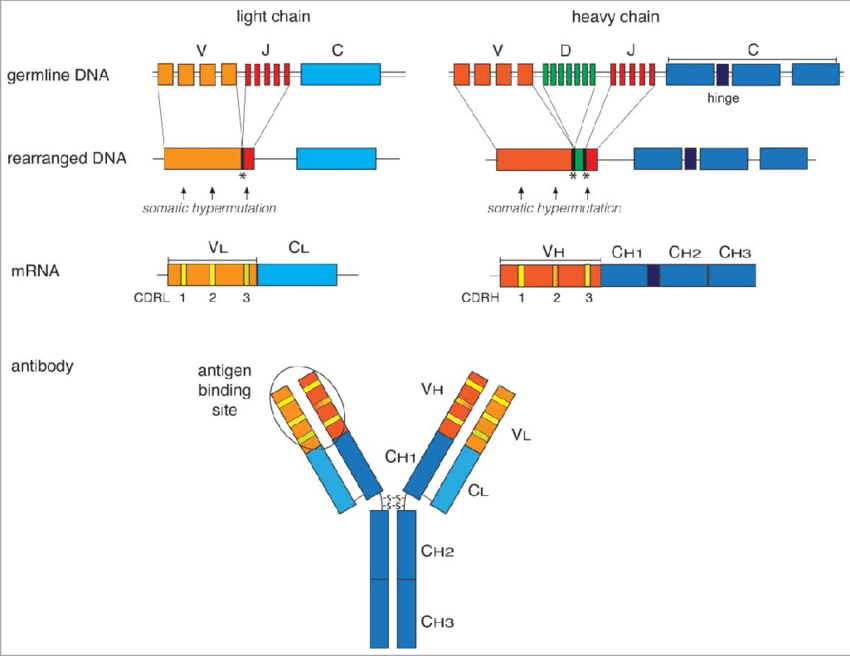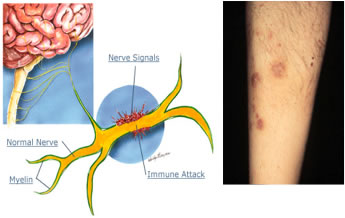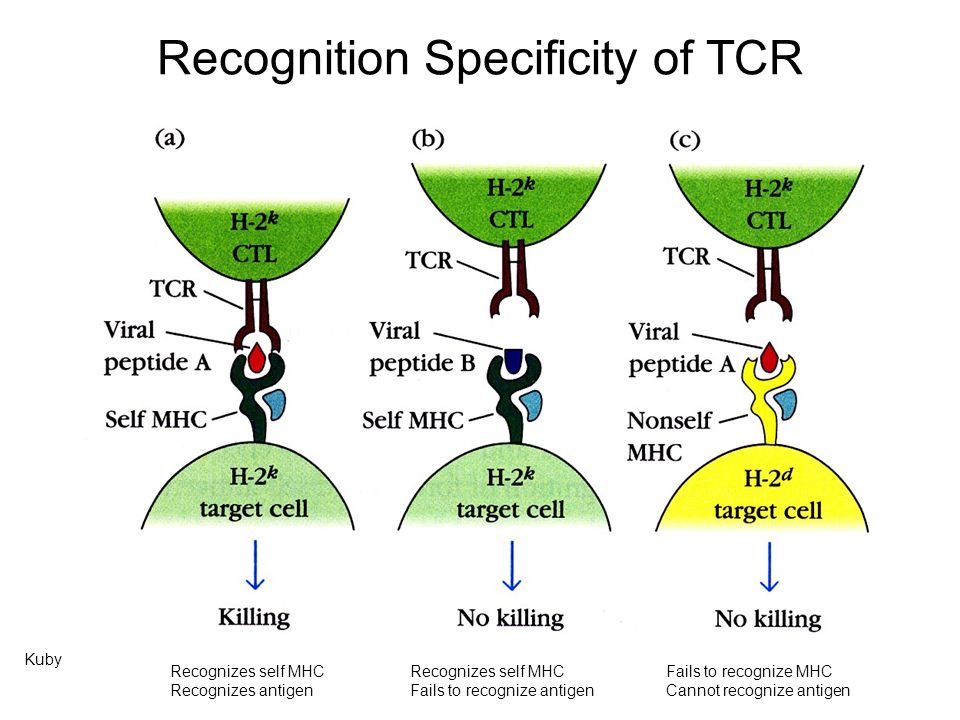Adaptive (acquired/specific) Immune System
![]() The adaptive immune system has evolved to protect the body from an ever-changing landscape of pathogens.
The adaptive immune system has evolved to protect the body from an ever-changing landscape of pathogens.
![]() Two arms of the adaptive immune defense:
Two arms of the adaptive immune defense:
B cells (antibodies target pathogens) & T cells (target infected cells) [slides from A.K. Chakraborty]
![]() T cells recognize (self) cells harboring pathogen:
T cells recognize (self) cells harboring pathogen:
Cells internally process self and foreign proteins, cut them to short peptides (8-15 amino acids).
Theses peptides (antigens) are presented on the cellsurface, attached to the protein major histocompatibility complex (MHC).
T cell receptors (TCRs) recognize pathogen peptides by binding to them strongly.
![]() T cell receptors (TCRs) & B cell receptors (BCRs) must be
T cell receptors (TCRs) & B cell receptors (BCRs) must be
Diverse: More than 108 distinct T-cell types to recognize an evolving landscape of pathogens
The combinatorics of V(D)J recombination (video1, video2)
can probably generate more than 1012 - 23 distinct combinations.
Specific: to lock on specific pathogens for immunological memory (vaccination)
Self-tolerant: to avoid auto-immune diseases




